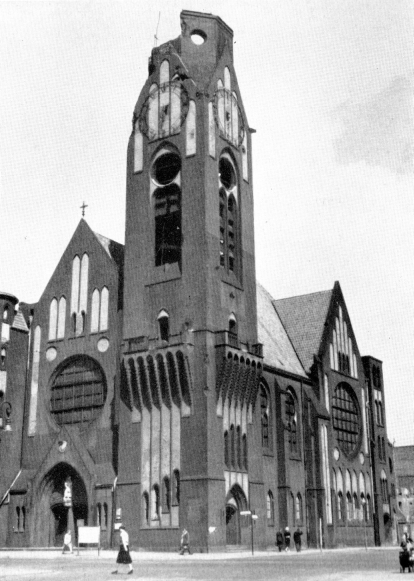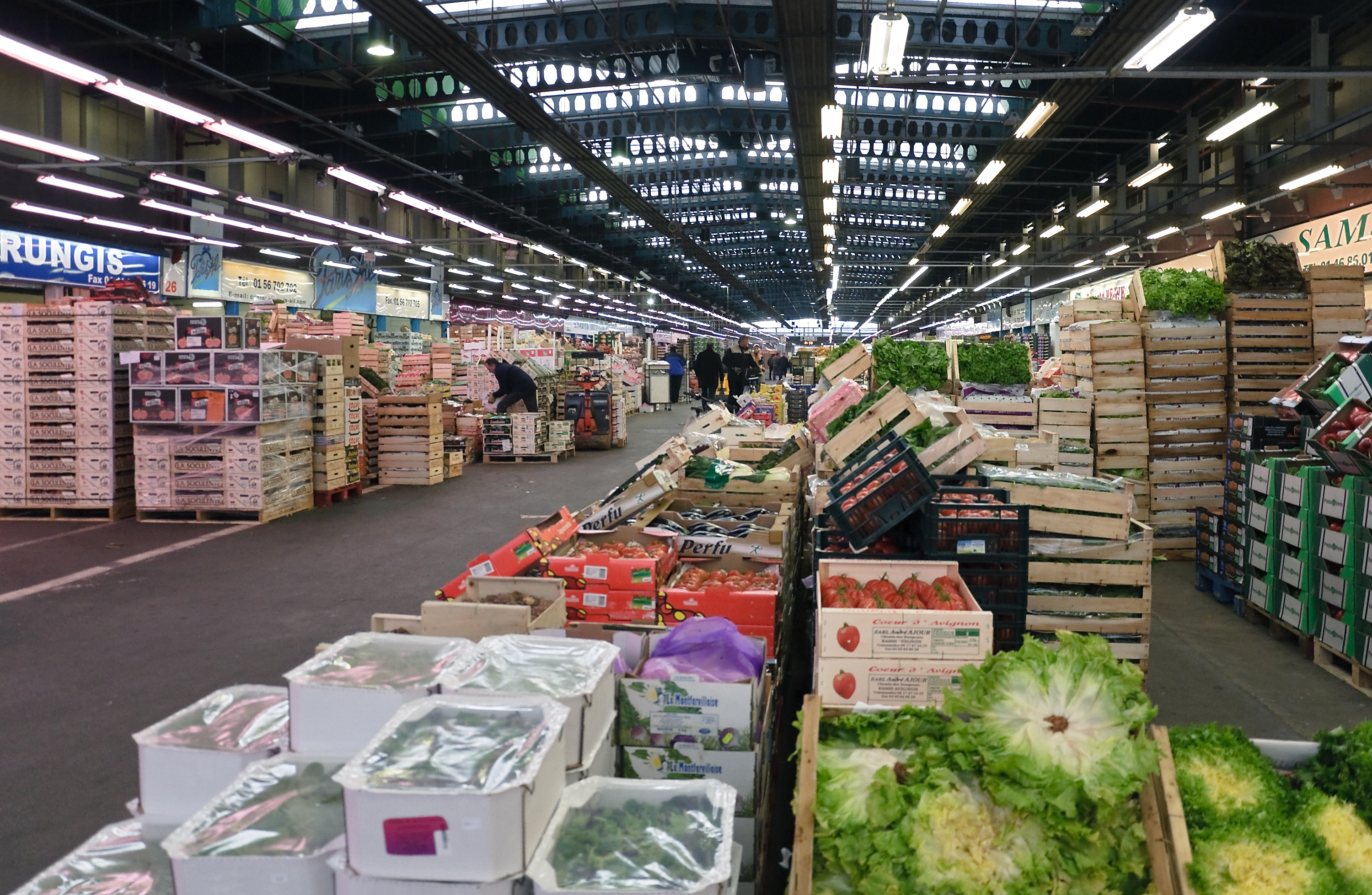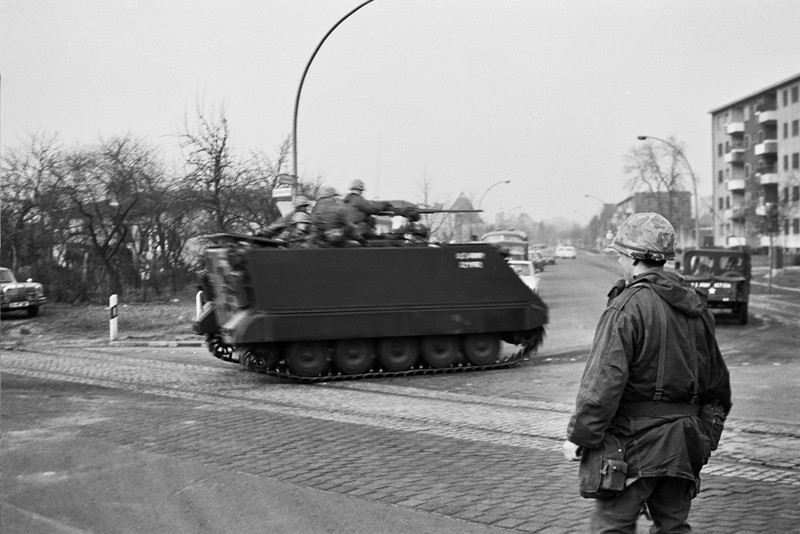|
Berlin Beusselstraße Station
Beusselstraße is a Berlin S-Bahn station in the Moabit district in the Mitte borough of Berlin. It is located at the Beussel bridge, which carries the street of Beusselstrasse over the Berlin Ringbahn. It is served by the Berlin S-Bahn, S-Bahn lines and . It is additionally served by the line on weekends. History From the opening of the first section of the ''Verbindungsbahn'' (connecting railway, later called the ''Ringbahn'', "Ring Railway") on 1 January 1872, there was a station that was a little further to the east than the current Moabit freight yard. This marked the beginning of the connecting railway and is still the zero point of the line chainage (distance marks) applied to the Ringbahn. Due to the growing patronage, the station was completely rebuilt in the early 1890s. Passenger and freight traffic were separated. The new Beusselstraße station was opened for passenger services at the Beussel bridge on 1 May 1894 and Moabit station became a freight yard only on th ... [...More Info...] [...Related Items...] OR: [Wikipedia] [Google] [Baidu] |
Verkehrsverbund Berlin-Brandenburg
The Verkehrsverbund Berlin-Brandenburg (VBB) is a transport association run by public transport providers in the German states of Berlin and Brandenburg. It is a private limited company owned jointly by the states of Berlin and Brandenburg (with one third each) and the 18 districts and district-free cities of Brandenburg with 1.85% each. It was founded on 30 December 1996. VBB claims to be one of the largest transport associations in Europe based on the area covered of 30,367 km2 with nearly 6 million inhabitants. Common ticketing was launched on 1 April 1999. The 2005 number of passengers transported was 1.23 billion, with 3.37 million passengers per day. Lines in the VBB Many lines are operated under the VBB fare structure. This includes all local traffic in Berlin, such as the Berlin S-Bahn and Berlin U-Bahn, as well as all regional train services, most of them RegionalExpress and RegionalBahn lines. There are also several trolleybus and ferry lines within the VBB ... [...More Info...] [...Related Items...] OR: [Wikipedia] [Google] [Baidu] |
Bombing Of Berlin In World War II
Berlin, the capital of Germany, was subject to 363 air raids during the Second World War. It was bombed by the RAF Bomber Command between 1940 and 1945, the United States Army Air Forces' Eighth Air Force between 1943 and 1945, and the French Air Force in 1940 and between 1944 and 1945 as part of the Allied campaign of strategic bombing of Germany. It was also attacked by aircraft of the Red Air Force in 1941 and particularly in 1945, as Soviet forces closed on the city. British bombers dropped 45,517 of bombs, while American aircraft dropped 22,090.3 . As the bombings continued, more and more people fled the city. By May 1945, 1.7million people (40% of the population) had fled. Prelude When the Second World War began in 1939, US President Franklin D. Roosevelt issued a request to the major belligerents to confine their air raids to military targets. The French and the British agreed to abide by the request "upon the understanding that these same rules of warfare will be sc ... [...More Info...] [...Related Items...] OR: [Wikipedia] [Google] [Baidu] |
Westhafen
The Westhafen (German for ''West Harbor'') is Berlin's largest inland port, located in the district of Moabit. The Westhafen has an area of 430,000 square meters and it is divided into two parallel harbor basins. It is connected to the Spree and Havel rivers via the Westhafen Canal and the Berlin-Spandau Shipping Canal (known as the Hohenzollern Canal) and is thus integrated into the supraregional waterway network between the Elbe and Oder rivers. The Westhafen is a transhipment and storage site for inland shipping with a growing importance. For the onward transport of goods by rail, it is connected to the Berlin ring railroad, the Hamburg and Lehrter freight yards and the Moabit freight yard. Goods are transported in and out by truck via the A 100 city highway. The Westhafen and Beusselstraße train and U-Bahn stations provide public transportation. The Westhafen was founded in 1923 In Greece, this year contained only 352 days as 13 days was skipped to achieve th ... [...More Info...] [...Related Items...] OR: [Wikipedia] [Google] [Baidu] |
Der Tagesspiegel
(meaning ''The Daily Mirror'') is a German daily newspaper. It has regional correspondent offices in Washington, D.C., and Potsdam. It is the only major newspaper in the capital to have increased its circulation, now 148,000, since reunification. is a liberal newspaper that is classified as centrist media in the context of German politics. History and profile Founded on 27 September 1945 by Erik Reger, Walther Karsch and Edwin Redslob, main office is based in Berlin at Askanischer Platz in the locality of Kreuzberg, about from Potsdamer Platz and the former location of the Berlin Wall. For more than 45 years, was owned by an independent trust. In 1993, in response to an increasingly competitive publishing environment, and to attract investments required for technical modernisation, such as commission of a new printing plant, and improved distribution, it was bought by the Georg von Holtzbrinck Publishing Group. Its current publisher is Dieter von Holtzbrinck with ed ... [...More Info...] [...Related Items...] OR: [Wikipedia] [Google] [Baidu] |
Berliner Zeitung
The ''Berliner Zeitung'' (; ) is a daily newspaper based in Berlin, Germany. Founded in East Germany in 1945, it is the only East German paper to achieve national prominence since Reunification of Germany, reunification. It is published by Berliner Verlag. History and profile ''Berliner Zeitung'' was first published on 21 May 1945 in East Berlin. The paper, a center-left daily, is published by Berliner Verlag. After the fall of the Berlin Wall, the paper was bought by Gruner + Jahr and the United Kingdom, British publisher Robert Maxwell. Gruner + Jahr later became sole owners and relaunched it in 1997 with a completely new design. A stated goal was to turn the ''Berliner Zeitung'' into "Germany's ''Washington Post''". The daily says its journalists come "from east and west", and it styles itself as a "young, modern and dynamic" paper for the whole of Germany. It is the only East German paper to achieve national prominence since German reunification, reunification. In 2003, th ... [...More Info...] [...Related Items...] OR: [Wikipedia] [Google] [Baidu] |
Wholesale Marketing
The consumption and production of marketed food are spatially separated. Production is primarily in rural areas while consumption is mainly in urban areas. Agricultural marketing is the process that overcomes this separation, allowing produce to be moved from an area of surplus to one of need. Food reaches the consumer by a complex network, involving production, assembly, sorting, packing, reassembly, distribution and retail stages. In developing countries the linkage between the producer and the retailer is still usually provided by assembly and wholesale markets, where wholesale marketing takes place using a variety of transaction methods. Recent years have seen an expansion of wholesale marketing in European and former CIS countries. On the other hand, the growth of supermarkets in many regions has seen the development of direct marketing and a reduced role for wholesale systems. Types of wholesale market Wholesale markets can either be primary, or terminal, markets, situat ... [...More Info...] [...Related Items...] OR: [Wikipedia] [Google] [Baidu] |
Nazi Germany
Nazi Germany, officially known as the German Reich and later the Greater German Reich, was the German Reich, German state between 1933 and 1945, when Adolf Hitler and the Nazi Party controlled the country, transforming it into a Totalitarianism, totalitarian dictatorship. The Third Reich, meaning "Third Realm" or "Third Empire", referred to the Nazi claim that Nazi Germany was the successor to the earlier Holy Roman Empire (800–1806) and German Empire (1871–1918). The Third Reich, which the Nazis referred to as the Thousand-Year Reich, ended in May 1945, after 12 years, when the Allies of World War II, Allies defeated Germany and entered the capital, Berlin, End of World War II in Europe, ending World War II in Europe. After Hitler was appointed Chancellor of Germany in 1933, the Nazi Party began to eliminate political opposition and consolidate power. A 1934 German referendum confirmed Hitler as sole ''Führer'' (leader). Power was centralised in Hitler's person, an ... [...More Info...] [...Related Items...] OR: [Wikipedia] [Google] [Baidu] |
Eberhard Diepgen
Eberhard Diepgen (born 13 November 1941) is a German lawyer and politician who served as Mayor of West Berlin from 1984 to 1989 and again as Mayor of (united) Berlin, from 1991 until 2001, as member of the Christian Democratic Union (CDU). Early life, education, and career Eberhard Diepgen was born on 13 November 1941 in the Berlin district of Wedding. He was to become the first native of Berlin in the office of governing mayor. After graduating from high school in 1960, Diepgen began studying law at the Free University of Berlin. During this time he was already politically active and joined the Christian Democratic Union (CDU) in 1962. As a member of the "Ring of Christian Democratic Students" (RCDS), he briefly chaired the "General Student Committee" (ASTA) of the Free University in 1963. After passing the first state examination in 1967, Diepgen worked as a trainee lawyer at the Berlin Higher Regional Court and was admitted to the bar in 1972 after the second state examin ... [...More Info...] [...Related Items...] OR: [Wikipedia] [Google] [Baidu] |
Governing Mayor Of Berlin
The governing mayor () of Berlin is the head of government, presiding over the Berlin Senate. As Berlin is an independent city as well as one of the constituent states of Germany (), the office is the equivalent of the ministers president of the other German states, except the states of Hamburg and Bremen, where the heads of government are called "First Mayor" and "President of the Senate and Mayor", respectively. The title Governing Mayor of Berlin is the equivalent of Lord Mayor in the meaning of an actual executive leader. According to the Berlin Constitution, the governing mayor is member and head of the Berlin Senate. The ministers are called senators. The two deputies additionally hold the title of Mayor (, historically: burgomaster). The title Mayor is also held by the heads of the twelve boroughs of Berlin, although they do not actually preside over self-governmental municipalities. The governing mayor is elected by the city's state parliament, the Abgeordnetenhaus ... [...More Info...] [...Related Items...] OR: [Wikipedia] [Google] [Baidu] |
Deutsche Reichsbahn (East Germany)
The Deutsche Reichsbahn (, ) or DR was the operating name of state owned railways in East Germany, and after German reunification until 1 January 1994. In 1949, occupied Germany's railways were returned to German control after four years of Allied control following World War II. Those in the Soviet occupation zone (which became the German Democratic Republic or GDR on 7 October 1949) continued to run as the Deutsche Reichsbahn, the name given to the German national railways in 1937. In West Germany, the Reichsbahn was succeeded by the Deutsche Bundesbahn (DB). Both the Reichsbahn and the Bundesbahn continued as separate entities until 1994, when they merged to form the Deutsche Bahn. Organisation The DR was the largest employer in the GDR and as a state-owned firm was directly subordinated to the GDR Ministry of Transport ''(Ministerium für Verkehr der DDR)''. From November 1954 until November 1989, the GDR Minister of Transport also occupied the position of the Direct ... [...More Info...] [...Related Items...] OR: [Wikipedia] [Google] [Baidu] |
West Berlin
West Berlin ( or , ) was a political enclave which comprised the western part of Berlin from 1948 until 1990, during the Cold War. Although West Berlin lacked any sovereignty and was under military occupation until German reunification in 1990, the territory was claimed by the West Germany, Federal Republic of Germany (FRG or West Germany), despite being entirely surrounded by the East Germany, German Democratic Republic (GDR or East Germany). The legality of this claim was contested by the Soviet Union and other Eastern Bloc countries. However, West Berlin de facto aligned itself politically with the FRG from May 1949 and was thereafter treated as a ''de facto'' city-state of that country. After 1949, it was directly or indirectly represented in the institutions of the FRG, and most of its residents were citizens of the FRG. West Berlin was formally controlled by the Western Allies and entirely surrounded by East Berlin and East Germany. West Berlin had great symbolic signi ... [...More Info...] [...Related Items...] OR: [Wikipedia] [Google] [Baidu] |









